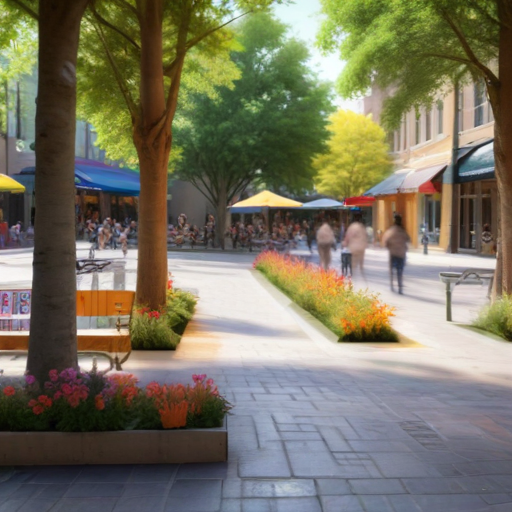Construction of a prominent 13-story apartment building commenced in November 1976 as part of the expansive urban renewal project known as Mt. Vernon Plaza. Located on Columbus’ Near East Side, this significant development included 226 apartment units alongside 150 townhouses and a shopping center featuring 30 stores.
The project, defined by its boundaries of Atcheson Street to the north, North 20th Street to the east, Mt. Vernon Avenue to the south, and Monroe Avenue to the west, aimed to uplift the community. A central feature of the plaza was an amphitheater adorned with benches and sculptures, which served as the venue for a special dedication by President Jimmy Carter on September 23, 1978. The event attracted thousands who gathered to witness the President and celebrate the long-anticipated completion of the plaza.
Preparations for this redevelopment initiative began as early as 1970 when the Columbus Department of Development sought a planning grant to assess the potential for expanding the existing Bolivar Arms Urban Renewal Project. Input from local residents, gathered through surveys and community engagement, revealed a pressing need for both a shopping center and better low-income housing.
The city selected the Neighborhood Development Corporation to spearhead the project, securing funding from the U.S. Department of Housing and Urban Development. However, the redevelopment process involved significant challenges, including the controversial use of eminent domain, which displaced approximately 200 residents and several businesses along Mt. Vernon Avenue to facilitate the construction.
Despite a budget of $13 million and numerous hurdles, a large banner at the dedication ceremony read: “Out of the Past a Brilliant New Future.” This message encapsulated the aspirations of the community for upliftment and revitalization through Mt. Vernon Plaza. However, the project struggled to meet its anticipated potential, leaving many of those hopes unfulfilled.
Overall, the history of Mt. Vernon Plaza serves as a reminder of the complexities involved in urban development and the importance of community needs in shaping successful initiatives. The story emphasizes the need for ongoing dedication to improving neighborhoods and creating spaces that truly serve the residents.
This reflection on Mt. Vernon Plaza illustrates not only historical struggles but also inspires future efforts toward community revitalization, advocating that with the right approach, urban areas can evolve and thrive.
